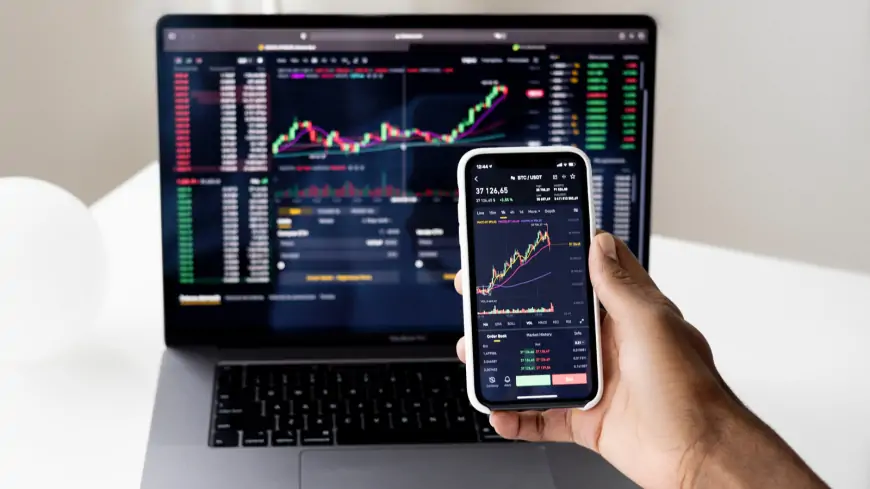How to invest in ETFs: Complete beginner's guide
Discover the essential steps to invest wisely in ETFs: from selecting the right funds to managing your portfolio effectively. Start investing today!

ETFs offer new investors a compelling gateway to the stock market, being cost-effective and generally posing less risk than individual stocks. This is due to their diversified nature, as a single fund encompasses a variety of investments.
Varieties of exchange-Traded funds
Various ETF categories offer exposure to diverse assets and markets:
- Specialized ETFs.
- Equity ETFs.
- Ethical ETFs.
- Commodity ETFs.
- Fixed Income ETFs.
- Currency ETFs.
- Factor ETFs.
Integrating these diverse investment types into your portfolio fosters asset diversification, thereby reducing risk. If one company or sector underperforms, others can potentially offset losses. Evaluating your financial strategy involves aligning these ETF types with your investment objectives and risk tolerance.
Acquiring an ETF: Step-by-step instructions
Here's a simplified guide to purchasing ETFs
1. Set up a brokerage account
You'll require a brokerage account to engage in buying and selling securities such as ETFs. If you don't have one yet, consider our guide on brokerage accounts and the process of opening one. Many brokerages facilitate online account setup, often with no minimum account balances, transaction fees, or inactivity charges. While initiating a brokerage account might seem intimidating, it's akin to opening a bank account.
Alternatively, if you prefer a hands-off approach to investing, consider signing up with a robo-advisor. These services construct and oversee an investment portfolio on your behalf, typically comprising ETFs, for a modest annual fee (usually around 0.25% of your account balance). Although robo-advisors offer pre-selected investment portfolios, they may not include the specific ETFs you're interested in. However, this is part of their allure — the robo-advisor handles investment decisions for you. To actively screen and invest in your chosen ETFs, you'll need a brokerage account with an online broker.
2. Utilize screening tools to locate and evaluate ETFs
With your brokerage account set up, it's time to determine which ETFs to purchase. Whether you're seeking top-performing broad index ETFs or conducting your own search, there are several methods to narrow down your ETF choices and simplify the selection process.
Most brokers provide robust screening tools to refine the extensive array of available ETFs based on various criteria, such as asset type, geographic location, industry sector, trading performance, or fund provider.
Given the vast number of ETFs listed in the U.S. alone, these screeners play a vital role in identifying the ETFs that align with your investment objectives. Consider employing the following criteria in your brokerage's screener to streamline your search:
Administrative expenses
Also referred to as expense ratios, these costs impact profitability, so lower ratios are preferable. Morningstar reports that the asset-weighted average expense ratio for passively managed funds was 0.12% in 2020, serving as a useful benchmark for your screener. However, some popular ETFs feature expense ratios significantly below this average, so it's advisable to screen for expenses below the average.
Volume
This metric indicates the number of shares traded within a specific time frame and reflects the popularity of a particular fund.
Commissions
These fees are incurred per transaction when buying or selling an ETF. Thankfully, commissions are now virtually non-existent at most major online brokers. However, it's prudent to verify this before making a purchase. Brokers that do charge commissions often provide select ETFs commission-free.
Holdings
Gain insight into the fund's top holdings, which represent the individual companies the fund invests in.
Trading prices
Since ETFs trade like stocks, you'll have visibility into current prices, enabling you to determine how many shares you can afford to purchase.
Performance
While past performance doesn't guarantee future returns, comparing the historical performance of similar funds can be informative. Assess a fund's long-term performance, such as its three-year, five-year, or 10-year track record, rather than focusing solely on its one-year performance.
3. Execute the transaction
Purchasing ETFs follows a process akin to buying stocks. Simply navigate to the "trading" section of your brokerage's website, where "trade" refers to either buying or selling an ETF. You'll initiate the purchase using the ETF's ticker symbol. Here's an overview of that and other fundamental terms you should be familiar with:
Ticker symbol
A unique identifier for the ETF you intend to purchase. Always verify that you have the correct one before proceeding.
Price
The current trading price, determined by:
- "Bid": The highest price buyers are willing to pay.
- "Ask": The lowest price sellers will accept in exchange.
Number of shares
The quantity of shares you wish to acquire.
Order type
Basic order types include:
- Market order: Immediate purchase at the best available price.
- Limit order: Purchase at a specified price or lower.
- Stop order: Purchase when a specified price (the stop price) is reached, executing the order entirely.
- Stop-Limit order: Once the stop price is reached, the trade converts into a limit order, filling up to the point where specified price limits are met.
Commission
The price per trade charged by the brokerage for its services. Most major brokerages now offer commission-free ETF trades.
Funding source
The bank account linked to your brokerage account. Ensure it contains sufficient funds to cover the total cost.
4. Wait and unwind
Congratulations on purchasing your inaugural ETF. These funds can lay the foundation for a well-diversified portfolio and mark the initial stride in a enduring investment journey in the markets. Resist the urge to constantly monitor the performance of this ETF (or your other investments), but rest assured you can access that information as needed by checking the ticker symbol on your brokerage's website or even by a simple search on Google.
If you're pondering how your recent ETF acquisition might impact your long-term investment objectives, you can explore various scenarios (e.g., 9% or 5% annual returns) using an investment calculator.











































